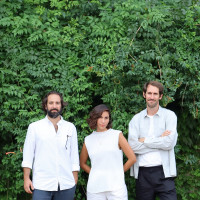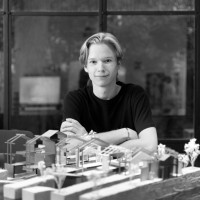The initial core years are sequentially organized, with each semester building on previous study. The core curriculum also functions to prepare students for two final years of greater self-directed coursework and research, culminating in the development and specialized design research in the fifth year. Throughout the course of study, students make frequent field trips to major cities, beginning in the first year with a trip to New York.
- Faculty in the first-year design and representation courses introduce students to new ways of seeing and responding to the built environment. Through exercises in drawing, analysis, multimedia work, and design, students learn to create space and form through the manipulation of site, program, experience, and construction.
- The second year of the program introduces students to more developed representational techniques, typology, larger and varied contexts and design theory as they may apply to their own individual design methodologies.
- In the third year, student are introduced to larger more complex design assignments that address a range of urban environments and related challenges. In either or both the third and fourth years, students have an opportunity to broaden their education off-campus by studying in the School’s NYC studio or abroad in the Florence and/or London programs.
- In the fourth year, students can also enroll in an advanced studio taught by visiting critics that feature prominent architects from around the world. The year culminates in more advanced require studios and coursework that focus on building technology, sustainability, building and accessibility codes in ways that help students develop integrated and responsive building designs.
- In the fifth, and last year, students work with faculty on specialized design research projects . Students are paired with a small group of School professors to conduct original research and designs on a topic related to the instructor’s area of their expertise. Final outcome varies, but many are eligible for University grants, diploma awards granted by faculty and professionals and publication.
Student Performance Criteria
Every accredited architecture degree program must demonstrate that each graduate possesses the knowledge and skills defined by the criteria established by the National Architectural Accrediting Board (NAAB) . These criteria help accredited degree programs prepare students for the profession while encouraging education practices suited to the individual degree program. Learn more about these criteria here .











